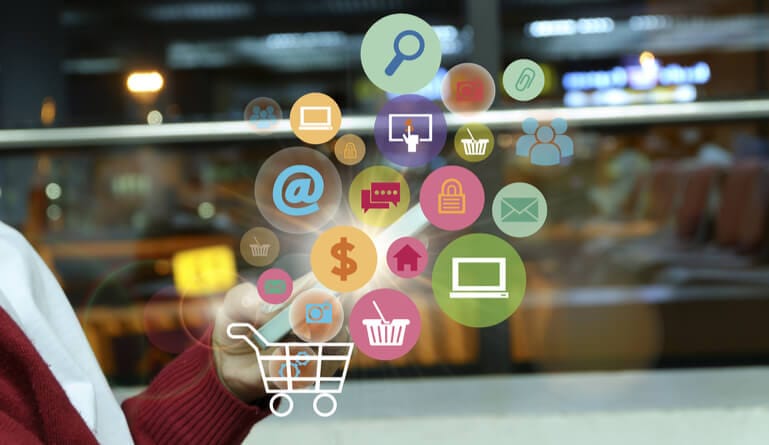M-commerce is now a foundational part of modern life. Buying able to use mobile applications to conduct business – from shopping for goods and services to paying for them – m-commerce applications have grown to be an everyday part of the lives of most consumers. Focusing on ways that businesses can integrate m-commerce into their business model or improve their existing m-commerce services should be a priority. Working on mobile commerce app development is an important step for many businesses – particularly retail – who want to stay and remain competitive.
What are the most important business-impacting types of m-commerce services and applications?
-
Finance and payments
This is one of the most user-friendly types of m-commerce services and applications. Using a mobile app pay for something is becoming a common phenomenon. Using an app like Google Pay or Apple Pay means that a customer doesn’t even need to carry a wallet – their payment information lives in their phone. Not every generation has adopted this as their payment standard, but pretty soon this will be the norm alongside cash and credit – or maybe even in place of. Customers also want their finance institutions – like credit unions and stockbrokers – to allow account access, deposits, and transfers from their mobile apps. For businesses with a physical presence, making sure that checking out via m-commerce application is important, while online businesses want to make sure they offer their clients an m-commerce application option to check their account.
-
Catalogs
M-commerce is changing the way that businesses run retail and even wholesale operations. IKEA offers customers a downloadable app that serves as an AR catalog. Customers can take pictures of their space, and using the AR app, superimpose furniture into their space to “try before you buy.” This kind of technology gives customers a better understanding of a product in their space and can help reduce the rate of refurbishment and returns that businesses see. This not only improves the customer experience but helps the bottom line of many businesses.
-
Marketing
How can different types of m-commerce services and applications help grow your brand awareness or be used as a marketing tool? Imagine owning a bookstore or a fast-food restaurant. What if you could use location-based mobile marketing to help you reach your customers when they were in your physical location? Using SMS apps to send visiting customers coupons or using your branded app to announce a flash sale or in-store discount is a great way to make your m-commerce app do some of your work for you.
-
Tickets and entertainment
Nowadays, phones are the keys to the world. You can use an app to unlock your front door with wi-fi or date enabled door locks – you can also use it as your pass for airline flights and concert tickets. This not only offers enhanced convenience for your customers, but also a reduced impact on the environment, which can be a boost for your brand.
-
Entertainment and games
Games like Pokemon Go and Harry Potter games have changed the nature of mobile entertainment. With an augmented-reality landscape, more people are interested in gaming. These games help meet an unmet pop culture need that enables users to participate in a universe that they are fans of and also game socially with others. Game developers have opportunities to monetize their apps with in-app purchases or by selling advertiser space and time
-
Healthcare
One of the most revolutionary types of m-commerce services and applications is in the realm of healthcare and wellness. First, US companies like Walgreens and CVS have pharmacy-specific apps that allow users to fill their prescriptions online and more easily pay for them through pickup or even delivery.
Apps like Lemonaid Health enable easy access to prescriptions without needing to see a doctor in person. Other companies, like Says and Teladoc, use an easy app interface to help people meet with doctors just using their smartphones. With affordable and no-wait appointments, these apps help patients get the medical treatment they need on demand.
While most of these services can only be used to diagnose, treat, and prescribe for minor issues that don’t involve an in-person exam, like the cold, flu, or UTI, they have a huge potential to help make medical care more accessible to more people.
When it comes to types of m-commerce services and applications, having native brand apps that help customers conduct transactions and do research straight from the app are key to seeing business growth and increased revenue. Even those who do most of their business in-store, such as grocery stores, need to have the ability to accept mobile payment and offer customers a mobile experience to help them remain competitive.
Using an app building platform like the Magento Mobile App Builder is a great way to help your business develop a mobile application or one of several types of m-commerce services and applications. Finding your m-commerce niche is an important way to stay connected to customers and continue a solid way of growing new business and additional revenue.





